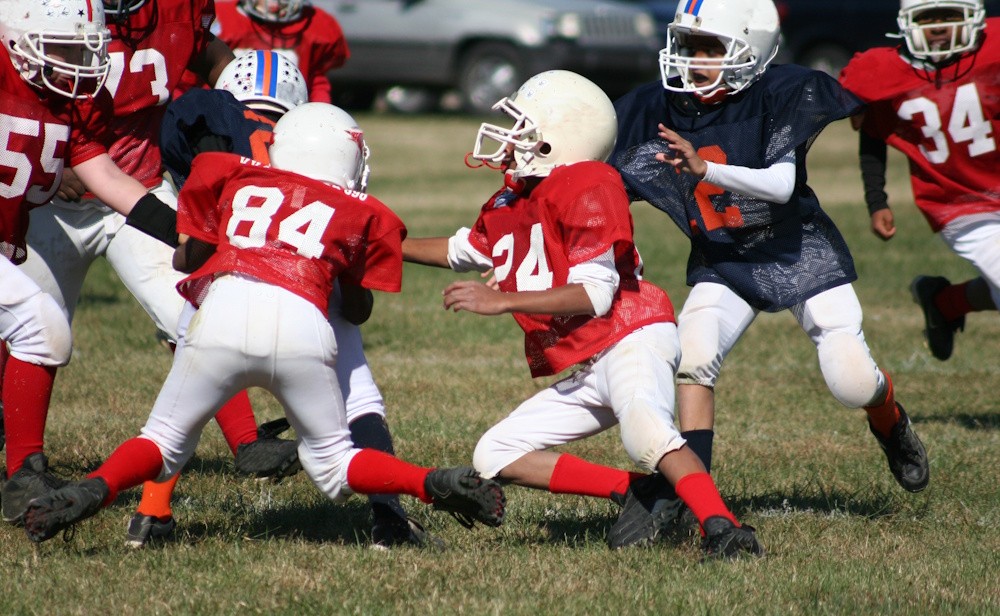These Methods Help Your Child Heal and Reduce Their Risk Of Future Injuries
Nothing quite matches the excitement of seeing your child take the field. You’ll never forget the first time they score a goal, get their first hit, or win their first race.
Sports not only teach the value of physical fitness, but they also instill valuable lessons about teamwork, strategy, and fair play. To excel in competitive play, athletes must push themselves to the limit, both during practice and game time.
Dedication to the sport improves performance and advances athletic skills, but it also increases the risk of getting hurt. If you’re the parent of a student-athlete gearing up for summer activities, here’s what you need to know about athletic training and professional physical therapy for kids.
Common Injuries Student Athletes Face
Increased activity levels, heat-related fatigue, poor technique, and repetitive movements increase the risk of on-the-field injuries, such as:
- Sprains: Characterized by stretched or torn ligaments, this condition causes pain, swelling, and joint instability.
- Knee injuries: ACL tears and meniscus injuries are common in sports that involve juking, jumping, or sudden changes in direction.
- Shoulder injuries: Rotator cuff injuries occur in sports like baseball, softball, swimming, and tennis that require repeated overhead motion. Shoulder dislocations and labral tears are also common.
- Shin splints and stress fractures: Runners and track athletes often experience shin splints due to repetitive impact. Shin splints cause pain along the shin bone. Stress fractures are small cracks in bones that can develop from overuse and lack of rest.
- Tennis elbow: This painful condition is characterized by tendon inflammation in the elbow and forearm, often because of repetitive motion and poor swinging technique.
Athletic training and professional physical therapy for kids are two orthopedic methods that address common athletic injuries, although in different ways. Athletic training helps prevent injuries. Physical therapy helps athletes recover from injuries faster. Let’s explore the unique value of each method.
What Is Athletic Training, and How Does It Help?
The best way to treat an injury is to prevent it from happening in the first place. Athletic training is a proactive approach to sports medicine that focuses on injury prevention, performance optimization, and prompt on-the-field care.
Athletic trainers can work with teams or with individual athletes to reduce the risk of injury and improve physical conditioning by:
- Teaching proper technique: Athletic trainers identify and correct poor technique that can cause strain and injury.
- Developing customized strength programs: Strength training improves joint stability and muscle endurance, reducing the likelihood of strains and sprains.
- Providing warm-up strategies: Dynamic warm-ups and proper stretching routines help prepare muscles for intense activity and reduce the risk of injury.
- Identifying early signs of overuse injuries: Trainers can spot the initial signs of stress fractures, tendonitis, and muscle fatigue before they become more serious issues. By addressing potential problems during the earliest stages, trainers help your student-athlete avoid injuries that can sideline them.
What Is Professional Physical Therapy, and How Does It Help?
Physical therapy is a medical treatment that restores movement, strength, and flexibility after an injury. Licensed practitioners at physical therapy clinics help injured student-athletes by:
- Accelerating recovery times: A well-structured physical therapy program helps athletes heal faster and safely return to the field of play.
- Restoring strength and mobility: Exercises focus on building muscle, increasing flexibility, and improving range of motion.
- Reducing pain and swelling: Techniques like manual therapy, electrical stimulation, and heat and ice therapy help manage pain and discomfort.
- Preventing reinjury: Physical therapists teach proper movement mechanics and strengthening techniques to avoid repeat injuries.
Why Combining Physical Therapy and Athletic Training Is the Best Approach
When physical therapy and athletic training work together, athletes receive both injury treatment and prevention strategies, ensuring long-term success on the field, court, or track. Here’s how these two disciplines work together.
- Physical therapy focuses on recovery, while athletic training focuses on injury prevention.
- Athletes recovering from injuries use physical therapy to rebuild strength and mobility, then transition into athletic training for continued conditioning.
- Athletic trainers help identify potential injury risks, and if an injury occurs, they refer athletes to physical therapists for treatment.
For example, a basketball player recovering from a sprained ankle may start with physical therapy for pain management and strength exercises, then move into athletic training for agility drills and jumping mechanics to prevent reinjury.
Support Your Student-Athlete Using Athletic Training and Physical Therapy
Summer sports are a great opportunity for your child to develop strength and skill, learn the value of teamwork, and make lifelong memories. However, without the right guidance and preparation, their risk of injury increases.
You can help your student-athlete succeed by scheduling an appointment at Mid-America Orthopedics. Unlike independent physical therapy clinics and athletic trainers, we have every resource your athlete needs under one roof.
Our athletic training programs and professional physical therapy for kids help your child recover and perform at their best while reducing the risk of future on-the-field injuries. Call Mid-America Orthopedics at (316) 630-9300 to schedule an athletic training consultation or to receive treatment for a sports-related injury.

